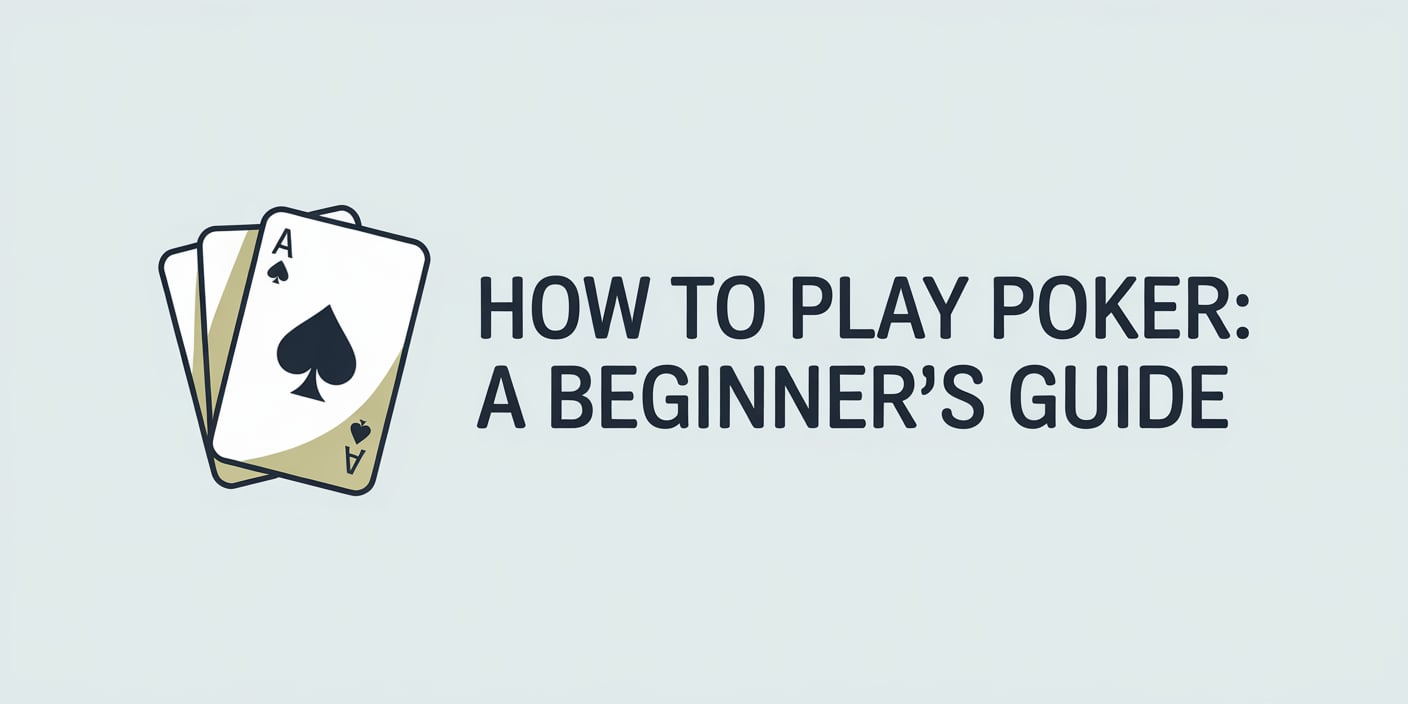How to Play Poker: A Beginner’s Guide

Poker is a game of chance that enjoys immense popularity around the world. In the United States, it was even considered a national game for a long time. Poker belongs to the category of games with incomplete information. Unlike chess or backgammon, where everything is visible on the board, poker players don’t know their opponents’ cards until the very end. (For an in-depth platform review, check out our guide.)
The main goal of poker is to collect a strong combination of cards that determines the winner. However, victory can also be achieved through bluffing and strategy, forcing other players to fold. Want to learn how to play poker from scratch? The rules can seem complex, and unexpected twists are common throughout the game.
In this article, we've compiled the basic principles of poker and illustrated some key aspects with practical examples. Of course, you won’t instantly become a pro, but you'll definitely be able to gather some friends for a poker night and impress them with your new knowledge!
Learning to Play Poker: Main Stages of the Game
Pre-Flop – This stage starts every hand. The small and big blinds post mandatory bets, and players are dealt two “hole” cards each. Only those who call or raise during the betting rounds stay in the hand.
Flop – Three community cards are placed face-up on the table, followed by another betting round. Since players now see 5 of the 7 potential cards for a final hand, many tend to place more aggressive bets.
Turn – The fourth community card is revealed. Players either go all-in or make minimal bets. Tension builds as they wait for the final card.
River – The fifth and final community card is revealed. At this point, players know what hand they can form. Math and psychology play a big role. If multiple players remain, a showdown occurs where hands are revealed to determine the winner.
When you sit at a poker table, remember: even if you fully understand the rules and strategy, there is no universal way to win. The outcome depends on your skill, experience, and the playing styles of your opponents.
Rules of Texas Hold’em Poker
Texas Hold’em is the most popular form of poker, played in casinos and clubs worldwide. Major international tournaments are based on this variant, with impressive prize pools.
The rules and hand rankings of Texas Hold’em are considered classic. Here are the basics:
-
The dealer button and betting move clockwise.
-
Mandatory small and big blinds are posted by the first two players to the left of the button.
-
A player wins by either having the best hand or making a bet that no one calls.
-
Players can use both their hole cards and the shared community cards to form a hand.
Among the different formats—Limit, Pot-Limit, and No-Limit—most players find No-Limit Texas Hold’em the most thrilling due to the freedom in betting.
Step-by-Step Guide to Playing Texas Hold’em
Learning the rules and hand rankings is essential, but a simple walkthrough helps beginners understand the flow of a game.
-
Players take their seats at an oval table. The dealer (button) is determined and distributes the cards.
-
Blinds are posted clockwise from the dealer. The first two players to the left of the dealer post the small and big blinds.
-
Each player receives two hole cards that only they can see.
-
If no one calls a bet, the player who made it wins the pot without a showdown.
-
The Flop – three community cards are placed on the table.
-
Players evaluate their hands and decide whether to bet, check, or fold.
-
The Turn – the fourth community card is revealed, followed by another round of betting.
-
The River – the fifth and final community card appears. One last round of betting ensues.
-
Showdown – if multiple players remain, they reveal their hands. The best hand wins the pot.
If two players have the same pair, the pot is split equally—though such ties are rare.
Poker Hand Rankings
Poker hands are critical to the game. Entire books and software tools have been created to analyze them. New players often wonder which hands are worth playing. There are 10 standard hand rankings to remember:
-
Royal Flush
Ace, King, Queen, Jack, Ten of the same suit. Extremely rare with odds of 0.0002%. -
Straight Flush
Five consecutive cards of the same suit. Odds: 0.0015%. -
Four of a Kind (Quads)
Four cards of the same rank. The highest is four Aces. Odds: 0.0240%. -
Full House
Three cards of one rank and two of another. The triplet determines strength. Odds: 0.1441%. -
Flush
Five cards of the same suit, not in sequence. Card values don’t matter. Odds: 0.1956%. -
Straight
Five cards in sequence, any suits. The higher the top card, the stronger the straight. Odds: 0.3925%. -
Three of a Kind (Set)
Three cards of the same rank. The highest triple wins. Odds: 2.1129%. -
Two Pair
Two different pairs. In case of a tie, the higher pair wins. Odds: 4.7539%. -
One Pair
A single pair. The higher the rank, the better. Odds: 42.257%. -
High Card
No combination—just your highest card. This “hand” appears in 49.882% of cases and rarely wins.
We hope this guide helped you understand the basics of Texas Hold’em. Now you're ready to start forming strong hands and maybe even win a few games!
